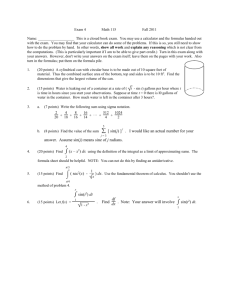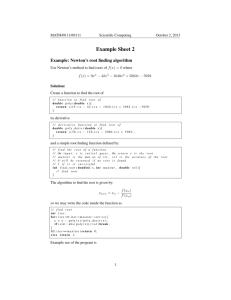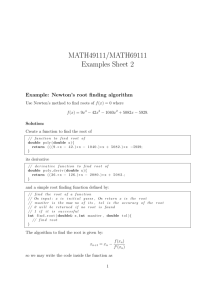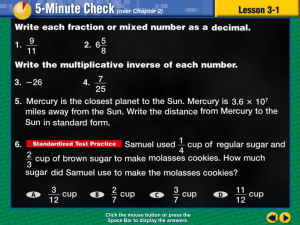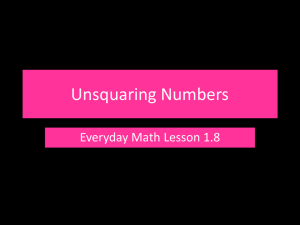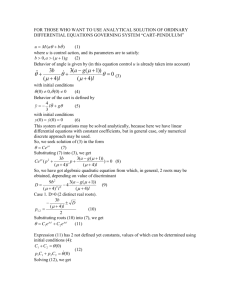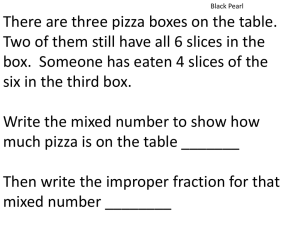zero - The Institute of Mathematical Sciences
advertisement
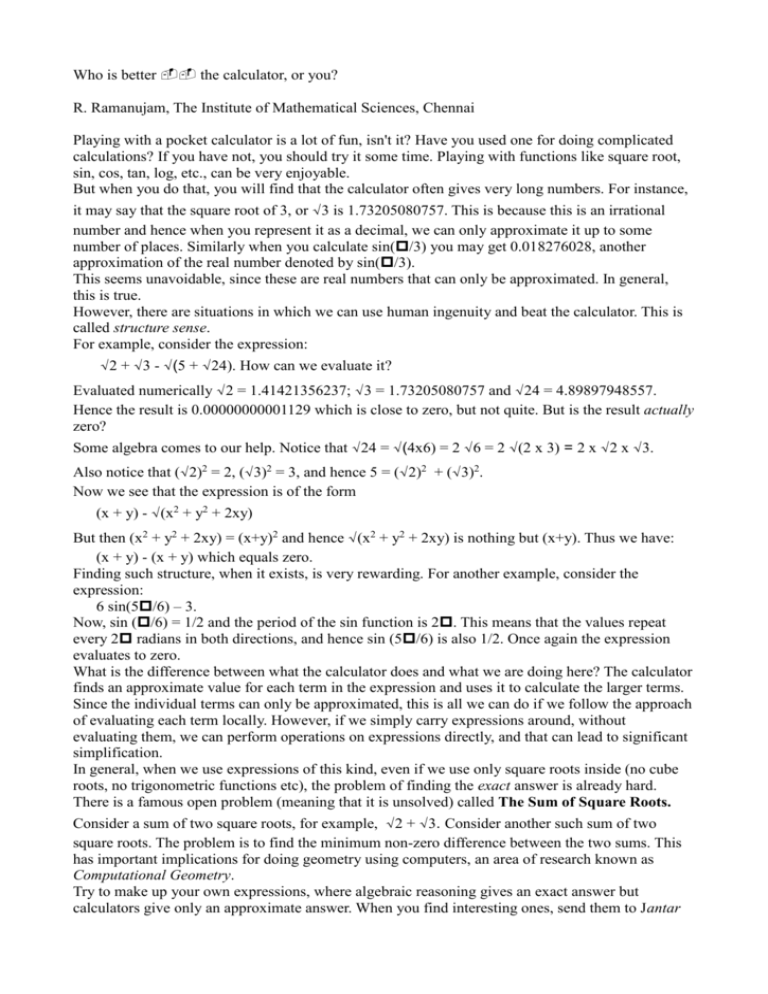
Who is better the calculator, or you? R. Ramanujam, The Institute of Mathematical Sciences, Chennai Playing with a pocket calculator is a lot of fun, isn't it? Have you used one for doing complicated calculations? If you have not, you should try it some time. Playing with functions like square root, sin, cos, tan, log, etc., can be very enjoyable. But when you do that, you will find that the calculator often gives very long numbers. For instance, it may say that the square root of 3, or √3 is 1.73205080757. This is because this is an irrational number and hence when you represent it as a decimal, we can only approximate it up to some number of places. Similarly when you calculate sin(/3) you may get 0.018276028, another approximation of the real number denoted by sin(/3). This seems unavoidable, since these are real numbers that can only be approximated. In general, this is true. However, there are situations in which we can use human ingenuity and beat the calculator. This is called structure sense. For example, consider the expression: √2 + √3 - √(5 + √24). How can we evaluate it? Evaluated numerically √2 = 1.41421356237; √3 = 1.73205080757 and √24 = 4.89897948557. Hence the result is 0.00000000001129 which is close to zero, but not quite. But is the result actually zero? Some algebra comes to our help. Notice that √24 = √(4x6) = 2 √6 = 2 √(2 x 3) = 2 x √2 x √3. Also notice that (√2)2 = 2, (√3)2 = 3, and hence 5 = (√2)2 + (√3)2. Now we see that the expression is of the form (x + y) - √(x2 + y2 + 2xy) But then (x2 + y2 + 2xy) = (x+y)2 and hence √(x2 + y2 + 2xy) is nothing but (x+y). Thus we have: (x + y) - (x + y) which equals zero. Finding such structure, when it exists, is very rewarding. For another example, consider the expression: 6 sin(5/6) – 3. Now, sin (/6) = 1/2 and the period of the sin function is 2. This means that the values repeat every 2 radians in both directions, and hence sin (5/6) is also 1/2. Once again the expression evaluates to zero. What is the difference between what the calculator does and what we are doing here? The calculator finds an approximate value for each term in the expression and uses it to calculate the larger terms. Since the individual terms can only be approximated, this is all we can do if we follow the approach of evaluating each term locally. However, if we simply carry expressions around, without evaluating them, we can perform operations on expressions directly, and that can lead to significant simplification. In general, when we use expressions of this kind, even if we use only square roots inside (no cube roots, no trigonometric functions etc), the problem of finding the exact answer is already hard. There is a famous open problem (meaning that it is unsolved) called The Sum of Square Roots. Consider a sum of two square roots, for example, √2 + √3. Consider another such sum of two square roots. The problem is to find the minimum non-zero difference between the two sums. This has important implications for doing geometry using computers, an area of research known as Computational Geometry. Try to make up your own expressions, where algebraic reasoning gives an exact answer but calculators give only an approximate answer. When you find interesting ones, send them to Jantar Mantar!
